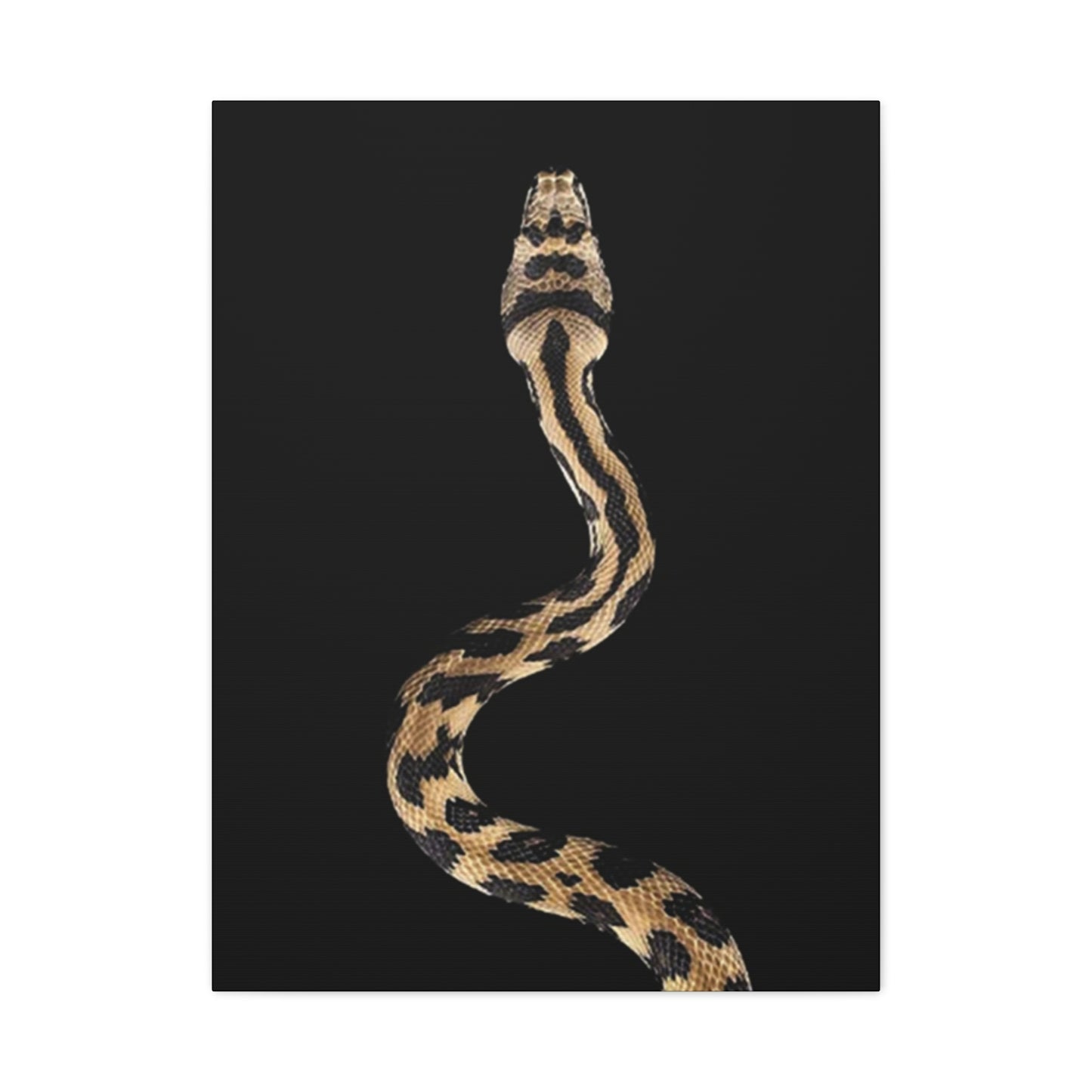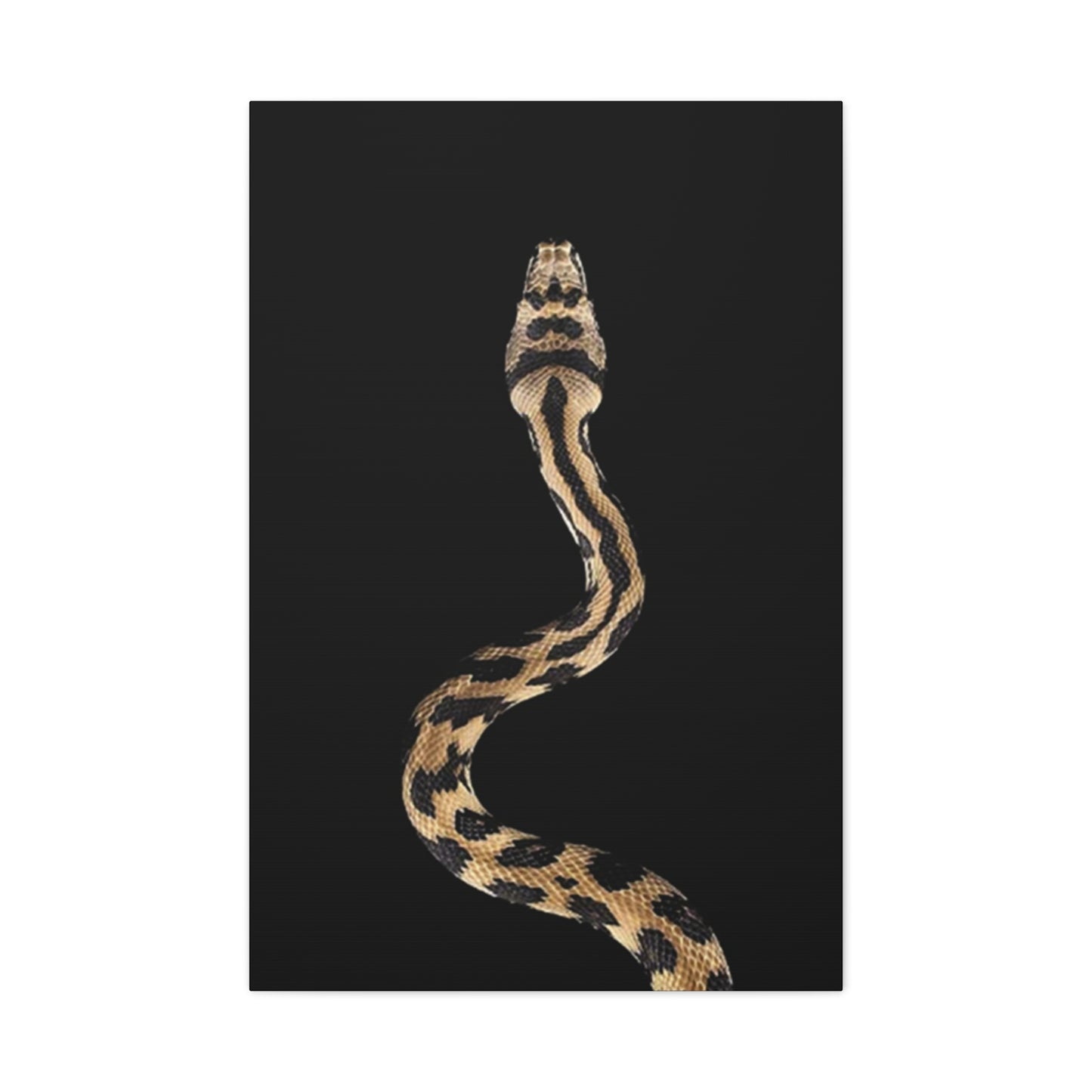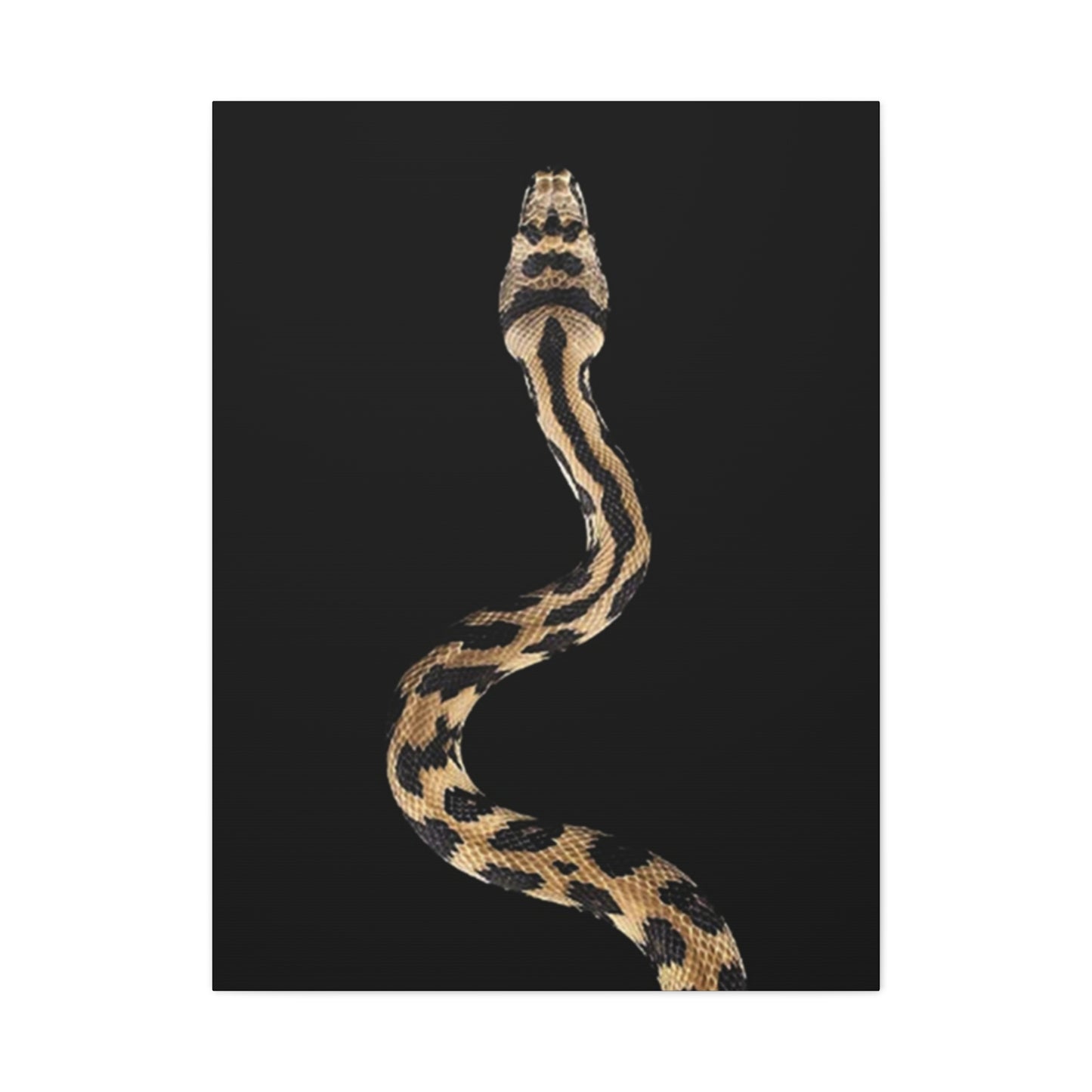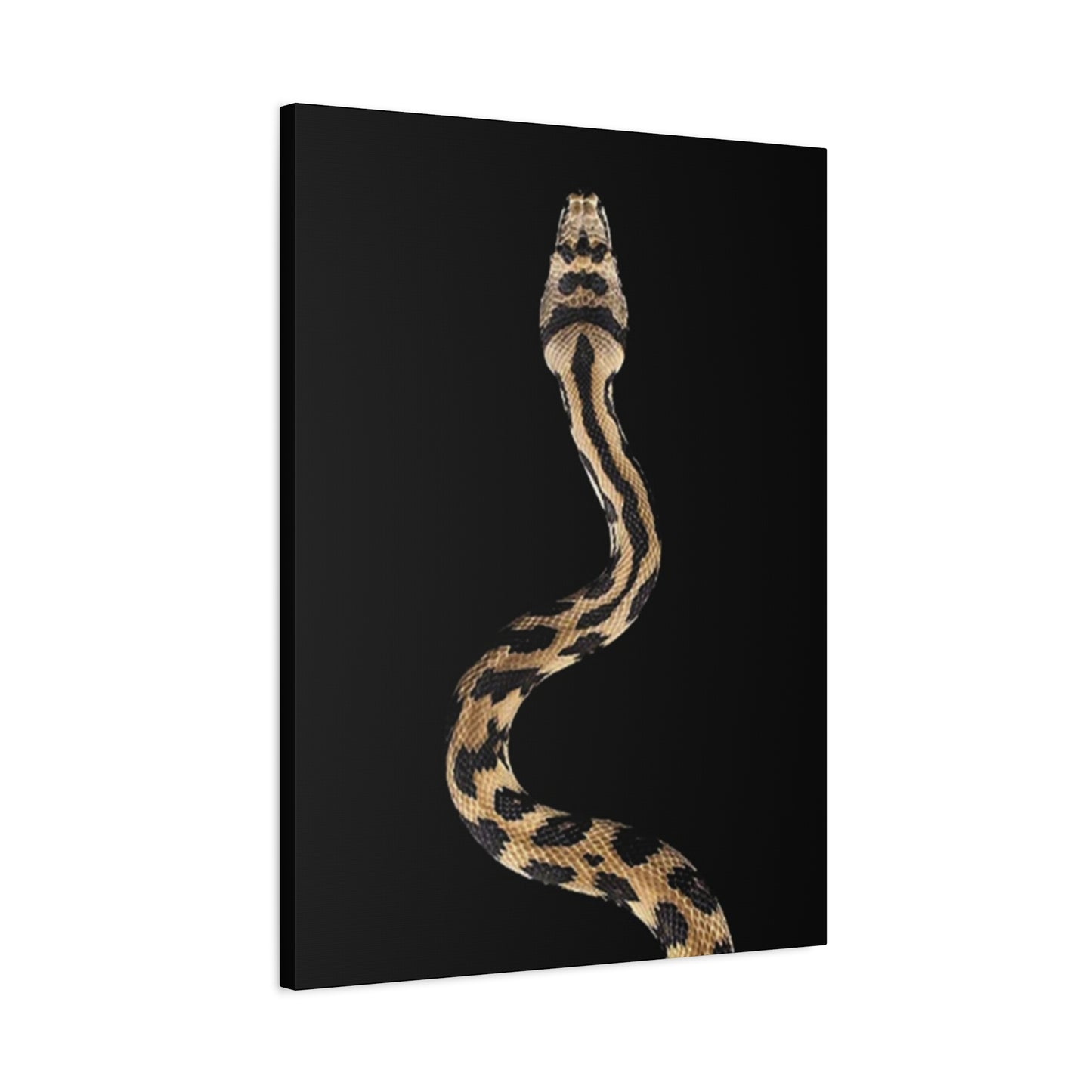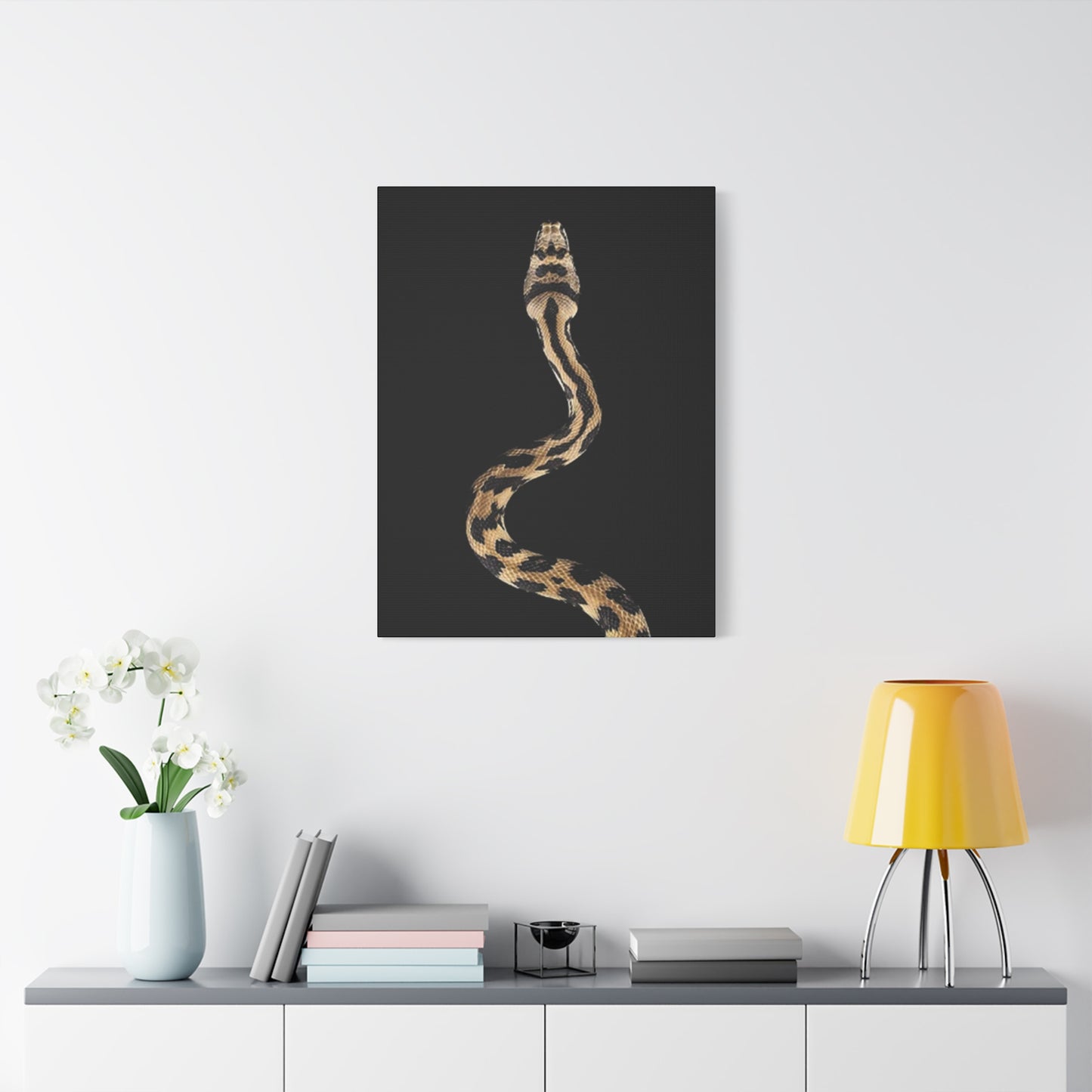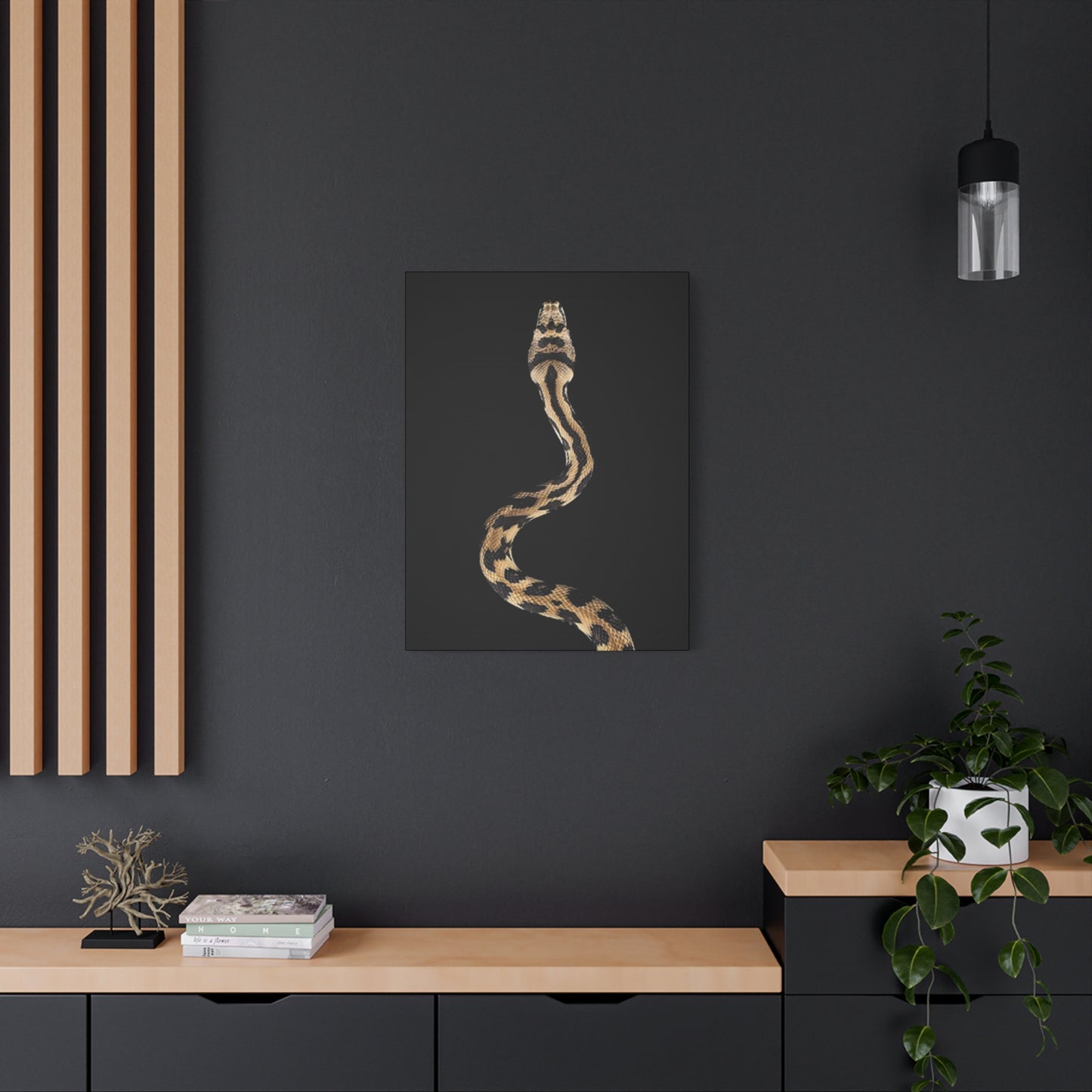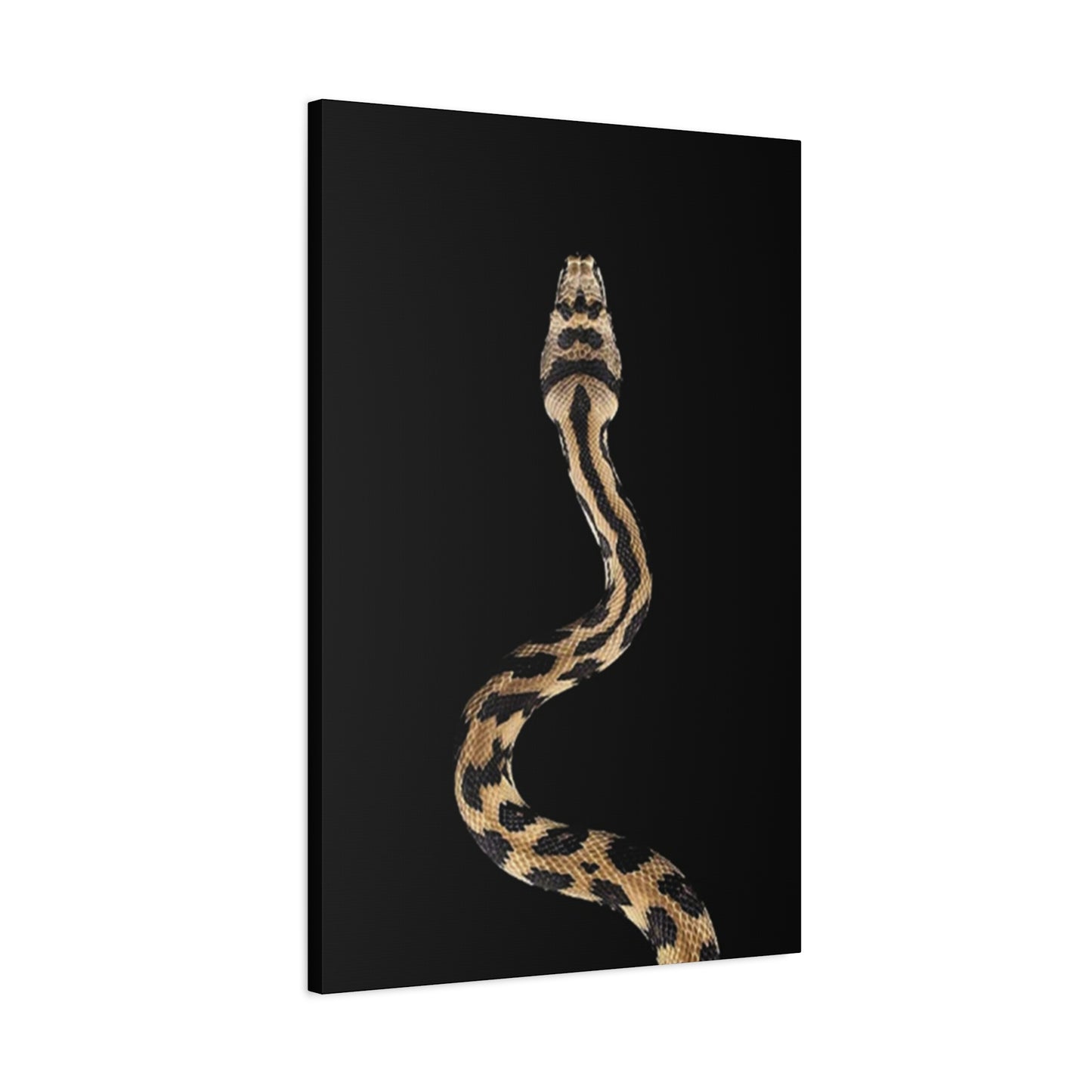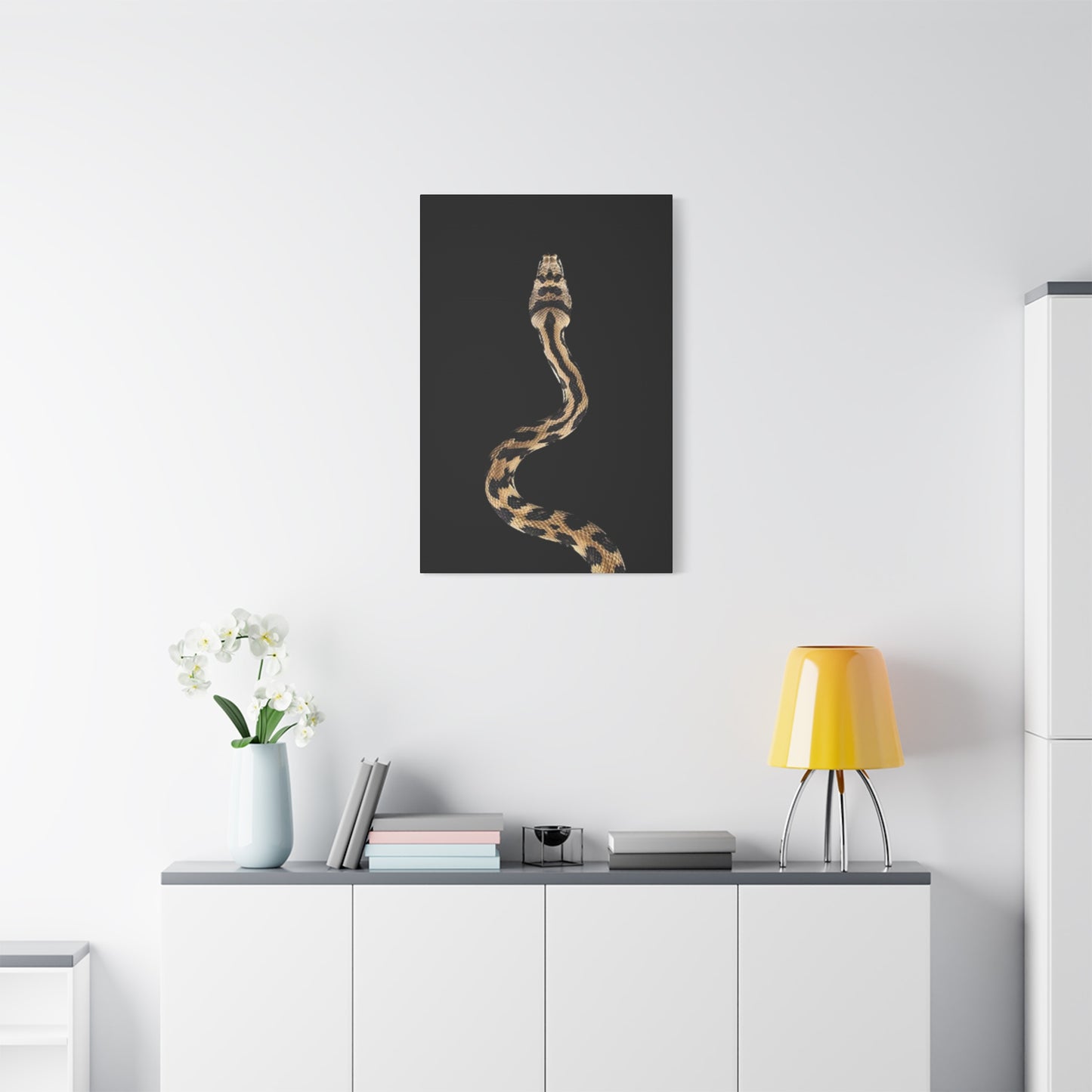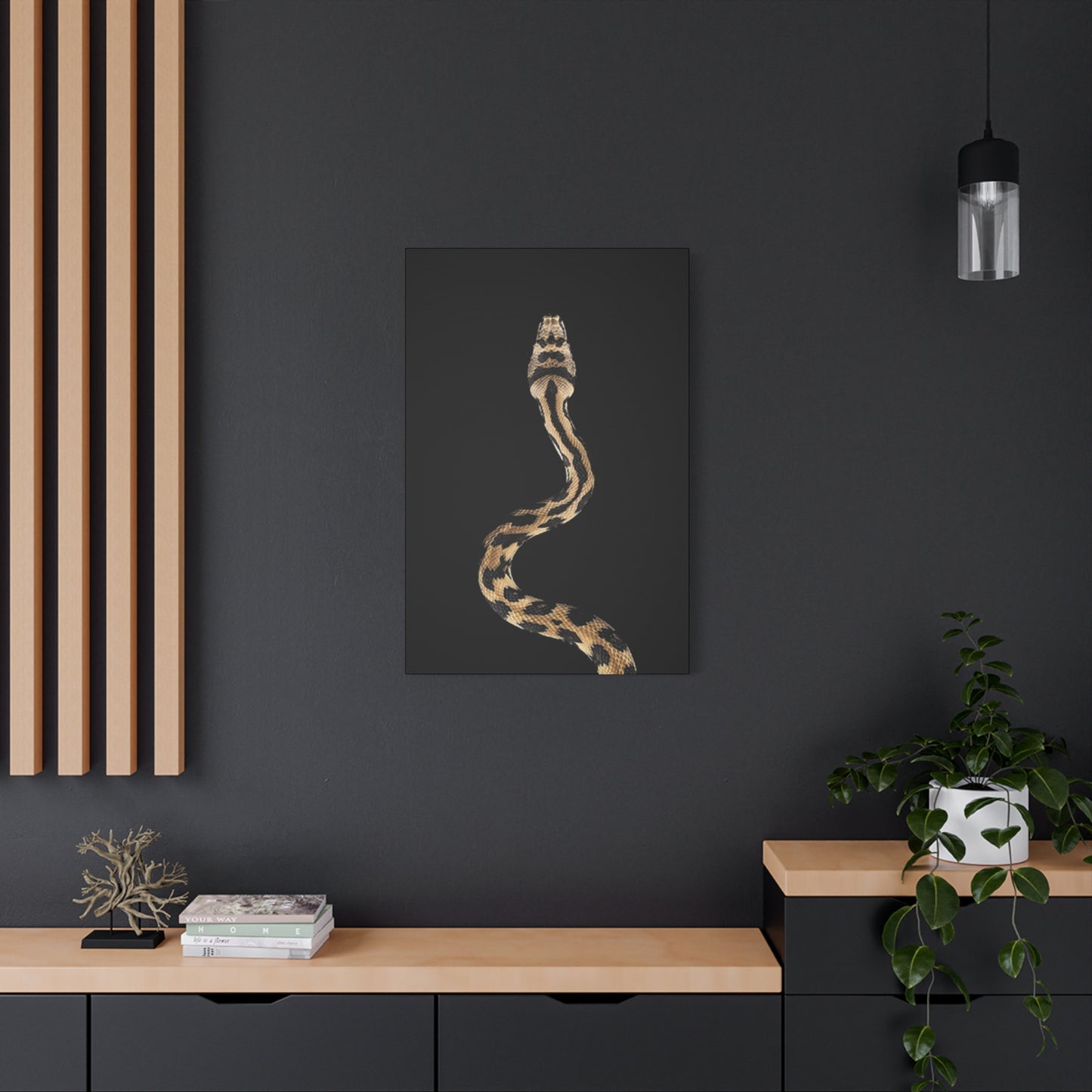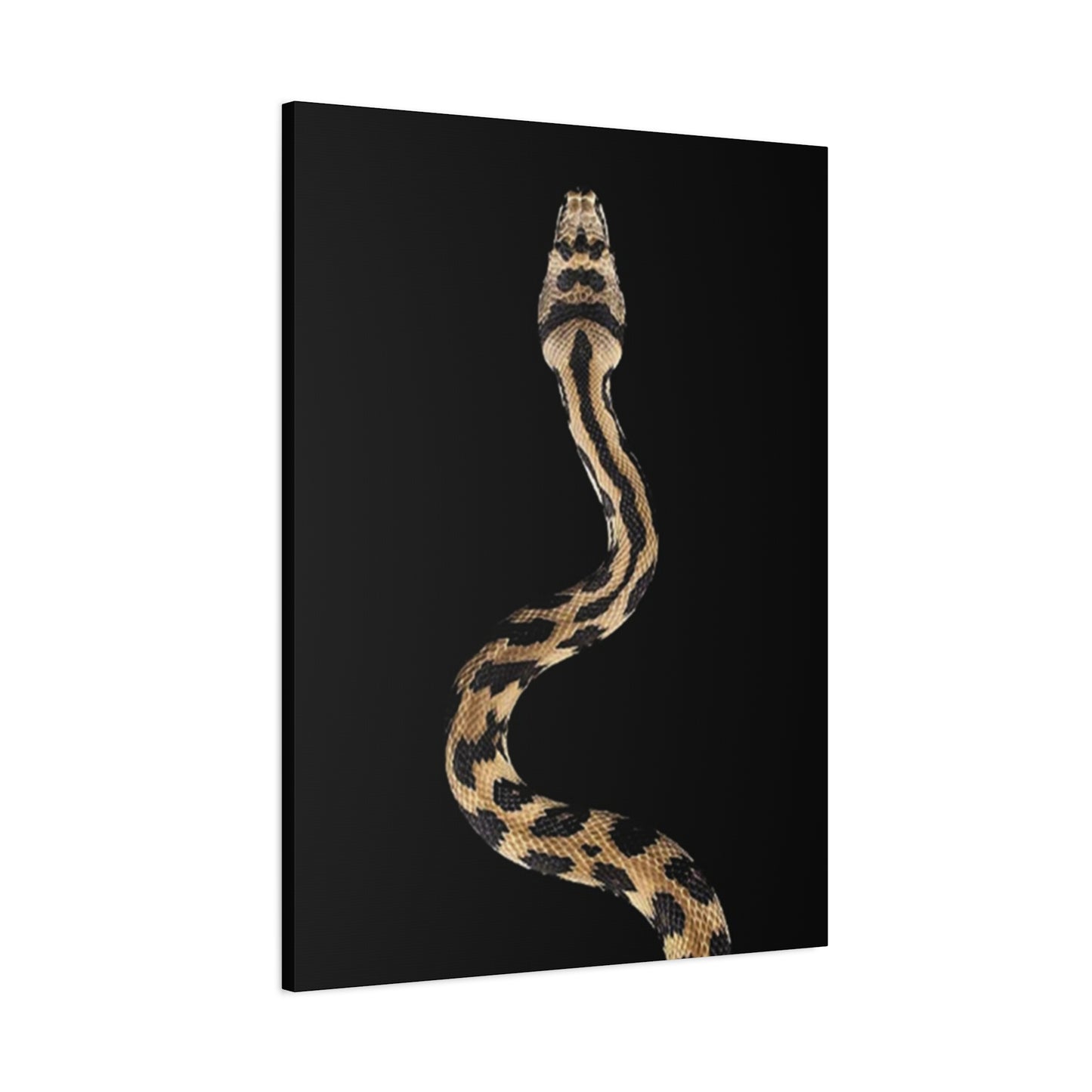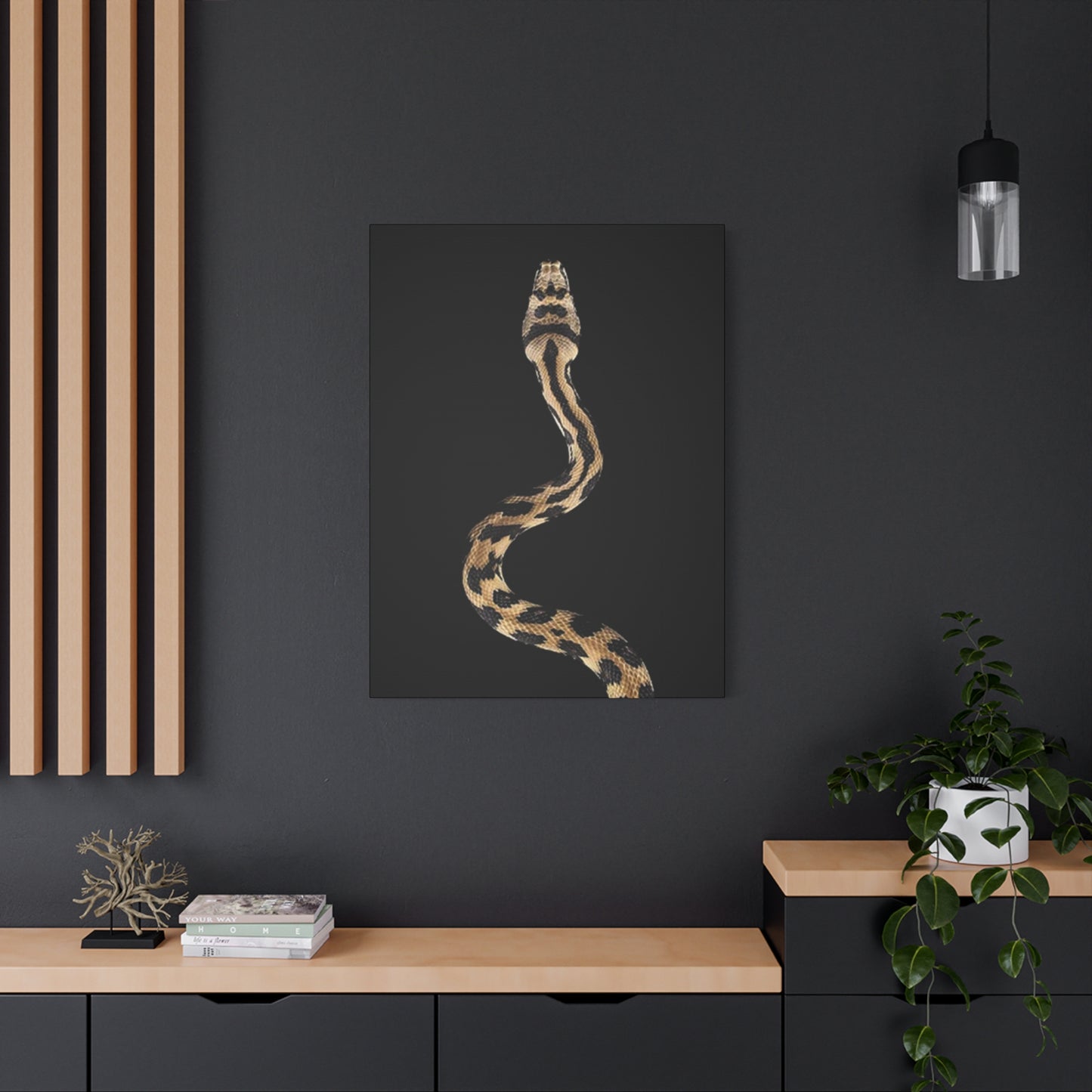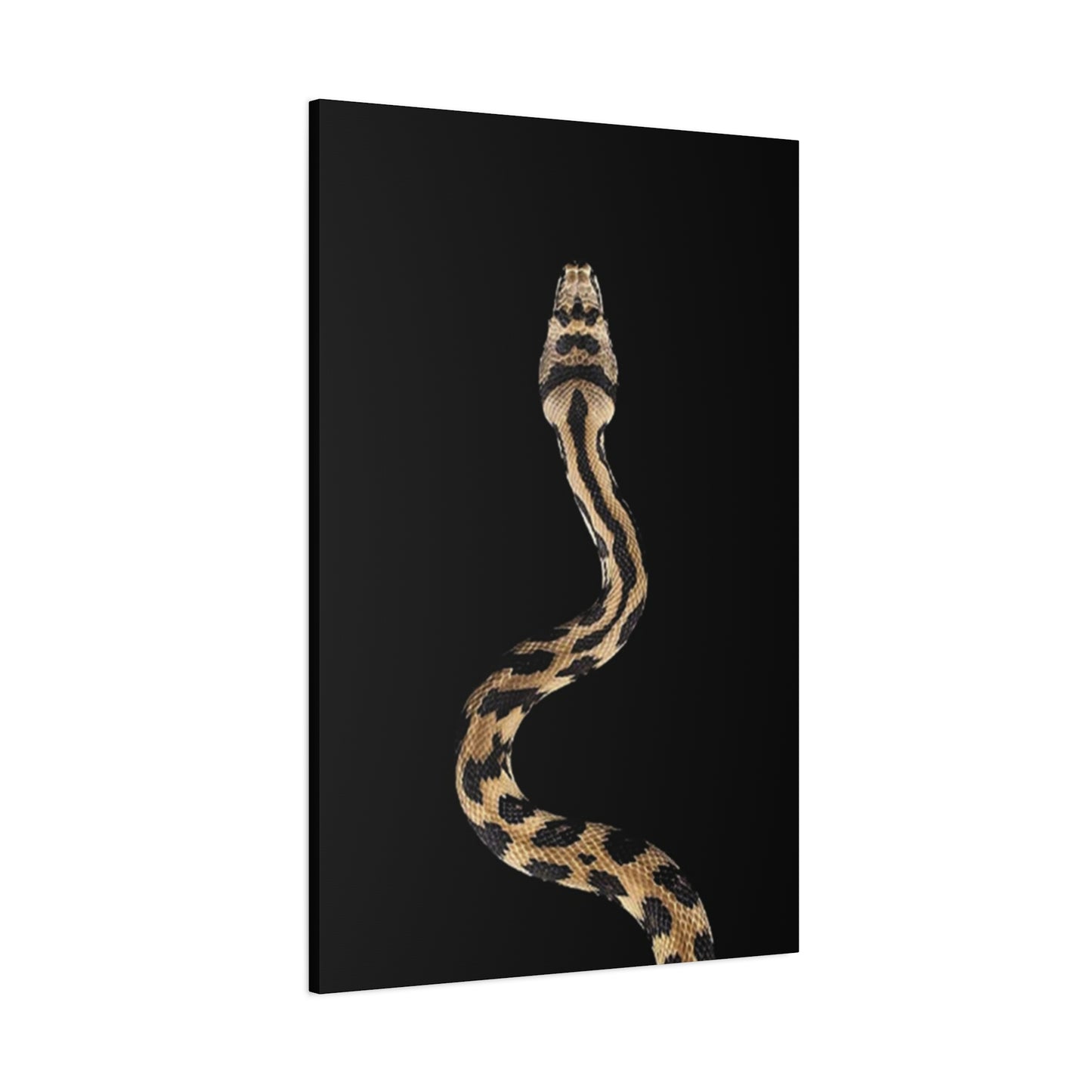Elevate Your Living Space with Snake Poster Wall Art: Combining Edgy Design with Sophisticated Modern Décor
Snake imagery has captivated human imagination for centuries, representing transformation, wisdom, healing, and primal power across countless cultures. In contemporary interior design, snake-themed artwork has experienced a remarkable resurgence, offering homeowners and decorators a striking way to introduce natural mystique and visual drama into their living spaces. This comprehensive guide explores everything you need to know about incorporating serpentine canvas artwork into your home, from selection strategies to installation techniques and styling approaches that maximize impact.
The allure of serpent-themed wall decorations lies in their inherent versatility. Whether you prefer sleek, minimalist interpretations or vivid, elaborate compositions, snake imagery adapts beautifully to diverse aesthetic preferences. These captivating creatures, with their sinuous forms and mesmerizing patterns, create focal points that command attention while maintaining an air of sophisticated mystique. As interior design continues to embrace biophilic elements and nature-inspired motifs, serpent artwork has emerged as a compelling choice for those seeking to make bold yet refined statements in their spaces.
Understanding the visual language of serpent art requires appreciating both its symbolic depth and aesthetic flexibility. From ancient civilizations that revered these creatures as divine beings to modern interpretations that celebrate their natural beauty, snake imagery carries layers of meaning that enrich any environment. This guide will walk you through the multifaceted world of serpent canvas artwork, providing practical insights and creative inspiration to help you select, display, and care for these captivating pieces.
Selecting Serpent Canvas Artwork for Your Interior
Choosing the right serpent-themed canvas involves careful consideration of multiple factors that influence both immediate visual impact and long-term satisfaction. The selection process begins with understanding your space's existing character, including architectural features, lighting conditions, color palette, and overall design direction. A well-chosen piece doesn't merely fill empty wall space; it enhances the room's atmosphere, complementing furnishings while introducing fresh visual interest.
Begin your selection journey by evaluating the room's purpose and mood. Living rooms often benefit from conversation-starting pieces that balance sophistication with approachability, while bedrooms might call for more serene, contemplative interpretations. Home offices can leverage the symbolic associations of serpents with wisdom and transformation, creating an environment conducive to focused work and creative thinking. Consider how the artwork will interact with natural and artificial lighting throughout the day, as shadows and highlights can dramatically alter a piece's appearance and emotional resonance.
Scale represents another crucial consideration in the selection process. Measure your available wall space carefully, accounting for furniture placement and traffic patterns. A common mistake involves selecting artwork that's too small for the intended location, resulting in a disconnected, unfinished appearance. Conversely, oversized pieces in compact spaces can overwhelm, making rooms feel cramped and claustrophobic. Industry professionals typically recommend that artwork should occupy approximately two-thirds to three-quarters of the available wall space above furniture pieces, creating visual balance without dominating excessively.
Material quality significantly impacts both aesthetic appeal and longevity. Premium canvas prints feature high-resolution imagery printed on archival-quality materials using fade-resistant inks that maintain vibrancy for years. Examine the canvas weave closely; finer textures generally indicate superior quality and allow for greater detail reproduction. The stretching technique also matters, with gallery-wrapped canvases offering a polished, professional appearance that eliminates the need for additional framing. Look for pieces with sturdy wooden stretcher bars that prevent warping and sagging over time.
Color compatibility deserves careful attention during selection. While contrasting hues can create dramatic impact, ensuring some tonal connection between the artwork and existing decor prevents jarring clashes. Extract dominant colors from the serpent imagery and identify corresponding shades within your space, whether in textiles, accessories, or accent walls. This doesn't require exact matching; instead, seek complementary relationships that tie the composition together organically. Cool-toned serpent imagery works beautifully in spaces featuring blues, grays, and silvers, while warm-toned pieces harmonize with earth tones, golds, and rich woods.
The artistic style should align with your personal aesthetic and the room's overall design language. Photorealistic renderings appeal to nature enthusiasts and those favoring traditional approaches, while abstract interpretations suit contemporary, avant-garde environments. Illustrative styles bridge these extremes, offering recognizable serpent forms enhanced through artistic interpretation and stylization. Consider whether you prefer scientifically accurate depictions that showcase specific species characteristics or imaginative compositions that prioritize artistic expression over biological precision.
Frame style, when applicable, provides another opportunity to customize your selection. While many contemporary serpent canvases feature frameless gallery wraps that emphasize the artwork itself, traditional frames can add formality and gravitas. Black frames create crisp definition and work across diverse styles, while natural wood frames introduce warmth and organic texture. Metallic frames in gold, silver, or bronze can elevate perceived luxury, particularly when the serpent imagery includes corresponding metallic elements or highlights.
Budget considerations shouldn't compromise quality, but understanding pricing structures helps maximize value. Mass-produced prints typically cost less than limited editions or original artwork, though reproduction quality varies considerably. Independent artists often offer competitively priced pieces with distinctive perspectives unavailable in commercial collections. Consider the artwork's intended longevity in your space; investment pieces for permanent installations justify higher expenditures, while rental properties or frequently redecorated spaces might call for more modest investments.
Research the artist or publisher when possible. Understanding the creator's background, technique, and artistic philosophy adds depth to your appreciation and often reveals quality indicators. Artists specializing in wildlife or natural subjects typically bring expertise that manifests in accurate anatomical details and authentic behavioral representation. Those approaching serpent imagery from symbolic or spiritual perspectives might incorporate cultural elements and mythological references that enrich interpretive possibilities.
Striking Serpent Wall Decoration Concepts
Bold serpent wall decorations make unequivocal statements, transforming ordinary rooms into extraordinary spaces that reflect confidence and individuality. These dramatic pieces leverage size, color intensity, unexpected compositions, or combinations thereof to create immediate visual impact that captivates viewers and defines spatial character. Successfully implementing bold serpent artwork requires balancing courage with thoughtfulness, ensuring drama enhances rather than overwhelms.
Oversized single-panel compositions deliver maximum impact through sheer presence. A six-foot canvas featuring a coiled serpent in striking detail commands attention in spacious living areas, hotel lobbies, or commercial settings where making memorable impressions matters. The key to success with such dramatic pieces lies in providing adequate breathing room; surrounding the artwork with negative space allows its full impact to register without competing elements diluting its power. Consider positioning large-scale serpent canvases as standalone features on otherwise minimally decorated walls.
Multi-panel installations, often called diptychs or triptychs depending on panel quantity, offer dynamic alternatives to single large canvases. These segmented compositions create visual rhythm through deliberate spacing between panels, with the serpent's form flowing across divisions to unify the arrangement. This approach works exceptionally well with serpents in motion, their sinuous bodies extending across multiple frames to emphasize movement and energy. The spacing between panels allows wall color to peek through, integrating the artwork more organically with the surrounding environment.
High-contrast color schemes amplify boldness through visual intensity. Serpent artwork featuring vibrant, saturated hues against stark backgrounds creates electrifying energy that energizes spaces. Consider compositions juxtaposing emerald green serpents against jet black backgrounds, or golden pythons against deep burgundy fields. These high-impact color relationships work particularly well in modern, minimalist interiors where the artwork serves as the primary color injection, or in maximalist spaces where they contribute to overall visual richness.
Unexpected perspectives and compositions challenge viewer expectations, creating memorable impressions through surprise and novelty. Extreme close-ups isolating serpent scales in abstract patterns transform familiar subjects into intriguing textures and shapes. Aerial views of coiled serpents create mesmerizing geometric compositions, while dramatic foreshortening of striking poses emphasizes power and dynamism. These unconventional approaches appeal to viewers seeking artwork that provokes thought and conversation beyond mere decorative function.
Metallic accents elevate serpent artwork into luxury territory. Gold leaf details highlighting scales or eyes introduce tactile dimension and light-reflective qualities that change with viewing angles and lighting conditions. Silver or copper accents create similar effects with different tonal qualities. These embellishments work especially well with serpent species naturally displaying iridescent or metallic coloration, creating cohesion between artistic enhancement and biological accuracy.
Dimensional elements add physical depth beyond printed imagery. Some contemporary serpent canvases incorporate raised textures, mixed media components, or sculptural elements that extend beyond the canvas surface. These three-dimensional qualities create dramatic shadow play and tactile interest that flat prints cannot match. Such pieces function almost as hybrid sculptures, particularly effective in spaces with prominent lighting that accentuates their dimensional qualities throughout the day.
Unexpected subject combinations create conceptual boldness alongside visual impact. Serpents intertwined with florals create fascinating juxtapositions of danger and beauty, while compositions featuring serpents amid geometric patterns bridge organic and structured design languages. Cultural mashups blending serpent imagery with traditional patterns from various artistic traditions create globally influenced pieces that resonate in eclectic, worldly interiors.
Neon or fluorescent color palettes push serpent artwork into contemporary, almost futuristic territory. These unnaturally vibrant interpretations abandon biological accuracy for pure visual excitement, creating pieces that feel energetic and youthful. Such bold color choices work brilliantly in modern urban apartments, creative studios, or entertainment spaces where conventional approaches feel too restrained.
Large-scale serpent portraits, focusing intensely on the head and upper body, create powerful eye contact that engages viewers emotionally. The directness of a serpent's gaze, when rendered at substantial size, carries psychological weight that transforms the artwork into an active presence within the room. These commanding portraits work exceptionally well in spaces where projecting confidence and authority matters, such as executive offices or personal sanctuaries.
Color Movements in Serpentine Poster Artwork
Color trends in serpent-themed artwork reflect broader movements within interior design while accommodating the unique characteristics of serpentine subjects. Understanding current color directions helps ensure your selections feel contemporary and cohesive with modern aesthetic sensibilities, though timeless approaches that transcend trends offer lasting appeal for those prioritizing longevity over fashion.
Earth-toned palettes dominate contemporary serpent artwork, reflecting the ongoing biophilic design movement that emphasizes natural connections. Warm browns, terracottas, ochres, and sage greens create grounded, organic compositions that feel simultaneously sophisticated and accessible. These naturalistic color schemes harmonize effortlessly with wooden furniture, natural fiber textiles, and the neutral backgrounds favored in modern interiors. Serpent imagery in earth tones feels authentic and respectful of the creatures' natural habitats while maintaining decorative appeal.
Monochromatic schemes offer refined elegance through tonal variation rather than contrasting hues. Black-and-white serpent artwork delivers timeless sophistication, with dramatic contrast emphasizing form, texture, and pattern. Sepia-toned pieces evoke vintage natural history illustrations, lending spaces scholarly, museum-quality atmosphere. Monochromatic approaches in single colors, such as various shades of blue or green, create cohesive, meditative compositions that feel both contemporary and serene.
Jewel tones have experienced resurgence in serpent artwork, bringing richness and luxury to interiors. Deep emeralds, sapphire blues, ruby reds, and amethyst purples transform serpent imagery into opulent statements that pair beautifully with velvet textiles, metallic accents, and sophisticated lighting. These saturated hues work particularly well with species naturally displaying vivid coloration, such as green tree pythons or coral snakes, where artistic enhancement amplifies existing beauty rather than imposing artificial palettes.
Pastel interpretations offer unexpected softness to traditionally bold serpent imagery. Blush pinks, powder blues, mint greens, and lavenders create approachable, gentle compositions that work beautifully in bedrooms, nurseries, or spaces prioritizing calm, relaxing atmospheres. These softer palettes challenge conventional associations between serpents and danger, presenting them instead as graceful, elegant creatures worthy of aesthetic appreciation. Pastel serpent artwork particularly appeals to those embracing cottagecore, romantic, or shabby chic design directions.
Metallic and iridescent color treatments capture the natural shimmer present in many serpent species' scales. Gold, bronze, silver, and copper tones introduce glamorous sophistication, while iridescent treatments that shift with viewing angles add dynamic, interactive qualities. These reflective elements interact beautifully with both natural sunlight and artificial illumination, ensuring the artwork's appearance evolves throughout the day and across different lighting scenarios.
High-contrast color blocking, featuring bold color fields separated by crisp boundaries, brings graphic impact to serpent compositions. These simplified color approaches often abstract serpent forms into essential shapes and patterns, creating artwork that functions almost as graphic design. This trend aligns with mid-century modern revivals and contemporary minimalism, offering clean, uncluttered visual statements that feel both retro and current.
Gradient transitions, sometimes called ombre effects, create visual flow and movement within serpent artwork. Smooth color progressions from dark to light or one hue to another guide the eye through compositions while adding dimensional illusion to flat surfaces. These gradients work especially effectively along serpents' elongated bodies, emphasizing their sinuous forms and creating dynamic energy. Digital printing technologies have made complex, smooth gradients increasingly accessible in affordable artwork.
Unexpected color combinations challenge conventions while creating memorable impressions. Turquoise serpents against coral backgrounds, or purple snakes on yellow fields, leverage complementary color relationships for maximum vibrancy. These adventurous pairings appeal to confident decorators willing to embrace bold, unconventional choices that distinguish their spaces from predictable design formulas.
Natural background colors situating serpents within realistic environments provide context while expanding color palettes. Forest greens, desert sands, jungle vegetation, or rocky terrain backgrounds create narrative depth and ecological authenticity. These environmental contexts satisfy nature enthusiasts while providing color variety that helps integrate artwork with diverse interior color schemes.
Neon and fluorescent accents inject contemporary edge into serpent artwork. Bright electric blues, acid greens, hot pinks, or luminous yellows create energetic, youthful compositions that feel urban and modern. These vibrant injections work particularly well as accent elements rather than dominant colors, preventing overwhelming intensity while delivering impactful color moments that energize spaces.
Styling Spaces with Serpentine Canvas Artwork
Decorating with serpent-themed canvas artwork requires thoughtful integration that balances the pieces' inherent drama with surrounding design elements. Successful implementation creates cohesive environments where artwork enhances rather than clashes with existing furnishings, architectural features, and decorative accessories. This process combines practical considerations with creative expression, resulting in personalized spaces that feel intentional and harmonious.
Establishing focal points represents the fundamental first step in serpent artwork placement. Identify the natural center of attention within each room, typically determined by furniture arrangement, architectural features like fireplaces, or primary viewing angles from entry points. Positioning serpent artwork at these focal points ensures it receives appropriate visual emphasis while organizing the room's overall composition around a clear center of interest. This strategic placement helps smaller rooms feel more organized and larger spaces avoid visual scatter.
Creating balance through symmetry or asymmetry influences spatial perception and aesthetic character. Symmetrical arrangements, such as matching serpent canvases flanking a central element, convey formality, stability, and traditional elegance. Asymmetrical compositions featuring serpent artwork of varying sizes or complementary pieces create dynamic, contemporary energy that feels more casual and organic. Consider the room's overall design language when choosing between these approaches; formal dining rooms often benefit from symmetry, while creative studios or eclectic living spaces embrace asymmetry.
Layering serpent artwork with complementary decorative elements builds visual richness and personality. Position plants near serpent canvases to emphasize natural connections and create lush, biophilic environments. Sculptural objects, whether abstract or representational, add dimensional variety that prevents monotonous flatness. Books, particularly those exploring natural history, mythology, or artistic subjects, reinforce intellectual and cultural depth. This layering technique transforms simple artwork display into curated vignettes that reveal personal interests and sophisticated taste.
Lighting dramatically affects serpent artwork's appearance and impact. Natural light changes throughout the day, creating evolving moods and highlighting different aspects of the imagery. Position artwork to avoid direct sunlight that causes fading, while maximizing gentle indirect light that brings colors alive without damage. Artificial lighting offers greater control; picture lights mounted above canvases provide focused illumination, while track lighting allows adjustable highlighting. Consider warm versus cool light temperatures; warm lighting enhances earth tones and creates cozy atmospheres, while cool lighting intensifies blues and greens while feeling more contemporary.
Color coordination between serpent artwork and surrounding elements creates cohesion without requiring exact matching. Extract secondary colors from the artwork and echo them through throw pillows, area rugs, curtains, or decorative accessories. This technique ties the room together organically while allowing the artwork to maintain its distinct identity. Alternatively, embrace contrast by surrounding bold serpent artwork with neutral backgrounds that allow the piece to command full attention.
Furniture placement relative to serpent artwork affects both practical functionality and aesthetic impact. Ensure primary seating arrangements provide comfortable viewing angles that allow appreciation without neck strain. Maintain appropriate clearance around artwork to prevent accidental damage from chair backs, opening doors, or high-traffic pathways. Low-profile furniture like platform beds or streamlined sofas allows wall artwork greater visual prominence, while tall bookcases or entertainment centers can compete for attention unless thoughtfully coordinated.
Texture variety prevents visual monotony and adds tactile interest to spaces featuring serpent artwork. Smooth canvas prints contrast beautifully with rough natural fiber rugs, nubby upholstery, or rustic wooden furniture. Incorporate varied textures through throw blankets, woven baskets, ceramic vessels, or metallic accessories. This textural diversity creates sensory richness that makes rooms feel complete and inviting rather than flat and sterile.
Scale relationships between serpent artwork and surrounding objects influence perceived proportions and spatial harmony. Large canvases pair well with substantial furniture pieces that match their visual weight, while delicate serpent prints complement more refined, smaller-scale furnishings. Mixing scales intentionally creates dynamic interest, but ensure at least some elements relate in size to prevent disconnected, random appearances.
Architectural features provide natural frameworks for serpent artwork placement. Alcoves, built-in shelving, or paneled walls create defined spaces ideal for showcasing artwork. Conversely, serpent canvases can soften hard architectural lines or draw attention away from less desirable features. Use artwork strategically to enhance your space's best attributes while minimizing visual impact of elements you'd prefer to downplay.
Seasonal or occasional updates keep spaces feeling fresh without requiring complete redecoration. Rotating serpent artwork between rooms, switching out complementary decorative accessories, or adjusting lighting emphasis provides renewed interest and prevents visual staleness. This approach allows collections to grow over time while maintaining manageable displays that avoid cluttered, overwhelming appearances.
Serpentine Wall Decoration: Understated Versus Dramatic Approaches
The spectrum between minimalist and bold styling represents fundamental aesthetic choices that profoundly influence spatial character and emotional impact. Understanding these contrasting approaches helps clarify your personal preferences and guides selection decisions that align with your vision and lifestyle needs. Neither approach is inherently superior; each offers distinct advantages suited to different contexts, personalities, and design objectives.
Minimalist serpent artwork embraces restraint, simplicity, and negative space to create serene, contemplative environments. These pieces typically feature limited color palettes, often monochromatic or restricted to two or three hues. Compositions emphasize clean lines, uncluttered backgrounds, and simplified serpent forms that suggest rather than detail every scale and pattern. The resulting aesthetic feels calm, sophisticated, and timeless, avoiding the risk of visual fatigue that busier compositions might provoke over time.
The philosophy underlying minimalist serpent artwork prioritizes quality over quantity, encouraging investment in fewer, carefully selected pieces rather than numerous items. This approach creates breathing room that allows each artwork's unique qualities to resonate fully without competing influences diluting its impact. Minimalist displays often feature substantial negative space surrounding the artwork, with the wall itself becoming an integral design element rather than merely a background surface requiring coverage.
Bold serpent artwork, conversely, celebrates visual abundance, dramatic impact, and unapologetic presence. These pieces feature complex compositions, rich color palettes, intricate details, and substantial size that demands attention and makes definitive statements. Bold approaches appeal to confident decorators who view their spaces as expressions of personality rather than retreats from stimulation. These environments energize occupants through visual excitement and constant discovery of new details within complex compositions.
Practical considerations influence appropriateness of each approach. Minimalist serpent artwork suits smaller spaces where visual restraint prevents claustrophobic feelings, rental properties where bold permanent installations might conflict with temporary residence, or homes frequently redecorated to reflect evolving tastes. Bold approaches work best in spacious environments with adequate wall area to showcase dramatic pieces, permanent residences where long-term commitments feel comfortable, or distinct rooms like home offices or entertainment areas where strong personality suits functional purposes.
Combining minimalist and bold elements creates transitional aesthetics that balance excitement with restraint. This middle path might feature a single bold serpent canvas as a focal point within an otherwise minimalist room, or arrange multiple minimalist serpent prints in gallery configurations that collectively create impact through accumulated presence rather than individual drama. This hybrid approach offers flexibility and appeals to those uncomfortable with either extreme.
Personal lifestyle factors should inform your position on this spectrum. Busy professionals seeking home environments that provide respite from demanding workdays often gravitate toward minimalist approaches that promote relaxation and mental clarity. Creative individuals or those who entertain frequently might prefer bold approaches that spark conversation and reflect dynamic personalities. Families with children might choose based on the artwork's durability and the household's tolerance for visual stimulation.
The minimalist aesthetic in serpent artwork often employs negative space as an active design element rather than empty background. Serpents rendered in profile against stark white or neutral backgrounds create elegant silhouettes that emphasize graceful curves and natural geometry. This approach reduces the subject to its essential visual elements, creating almost logo-like clarity that feels modern and refined. Such pieces integrate seamlessly into contemporary, Scandinavian, or Japanese-inspired interiors where simplicity reigns.
Bold serpent artwork frequently incorporates maximal detail, capturing every scale texture, pattern variation, and subtle color gradation. These realistic or hyperrealistic renderings celebrate biological complexity and natural beauty through meticulous observation and technical skill. Viewers discover new details with repeated viewing, preventing the visual fatigue that simpler compositions might eventually provoke. These pieces satisfy nature enthusiasts and detail-oriented individuals who appreciate thorough, comprehensive representations.
Color intensity provides another differentiating factor between these approaches. Minimalist serpent artwork typically employs muted, neutral, or limited color schemes that whisper rather than shout. Grays, beiges, soft greens, and desaturated tones create subdued sophistication. Bold approaches embrace saturated, vivid colors that sing out, demanding notice and creating energetic atmospheres. Electric greens, deep crimsons, vibrant yellows, and rich purples deliver chromatic punch that transforms room ambiance dramatically.
Framing choices reinforce either aesthetic direction. Minimalist serpent artwork often features frameless gallery wraps or extremely simple, thin frames that avoid drawing attention from the imagery itself. Bold pieces might incorporate substantial frames with decorative elements that amplify overall impact and create additional visual weight. Gold leaf frames, ornate carved wood, or substantial metallic borders elevate serpent artwork into statement pieces that command walls.
Expansive Serpentine Canvas for Dominant Wall Features
Large-scale serpent artwork transforms walls into commanding focal points that define spatial character and create lasting impressions on inhabitants and visitors alike. These substantial pieces, typically measuring four feet or larger in any dimension, leverage sheer size to deliver impact impossible for smaller artworks to achieve. Successfully incorporating oversized serpent canvases requires understanding both their tremendous potential and specific challenges they present in residential and commercial contexts.
The psychological impact of large artwork exceeds what size alone might suggest. Substantial serpent canvases create immersive experiences that engage viewers emotionally and intellectually, drawing them into detailed observation and contemplation. The serpent's form, when rendered at impressive scale, conveys power, grace, and natural majesty that smaller reproductions cannot match. This emotional resonance makes large-scale pieces valuable investments for spaces where creating memorable atmospheres matters, from luxury residential environments to upscale commercial establishments.
Wall selection for oversized serpent artwork requires careful evaluation of available space and architectural context. Ideal locations include large, uninterrupted wall expanses in living rooms, dining areas, or primary bedrooms where the artwork won't compete with windows, doorways, or built-in features. Stairway walls offer dramatic opportunities for vertical serpent compositions that follow ascending lines, creating dynamic movement through transitional spaces. Open-concept floor plans benefit from large artwork that helps define distinct zones within flowing, undivided areas.
Proportional relationships between artwork and surrounding elements prevent overwhelming small spaces or underwhelming large ones. A common guideline suggests artwork should occupy approximately sixty-five to seventy-five percent of the available wall width above furniture pieces, though statement walls without furniture below can accommodate even larger proportions. Ceiling height influences vertical dimensions; standard eight-foot ceilings suit artwork between four and five feet tall, while ten-foot or higher ceilings accommodate more substantial vertical pieces without crowding.
Installation considerations for large serpent canvases extend beyond simple hanging techniques. These substantial pieces require secure mounting to prevent accidents or damage. Locate wall studs and use appropriate heavy-duty hardware rated for the canvas's weight. Gallery-wrapped canvases often include hanging systems on their stretcher bars, but verifying these components' integrity before installation prevents failures. Consider professional installation for particularly valuable or massive pieces where proper mounting matters critically.
Viewing distance affects optimal sizing decisions. Artwork intended for viewing across spacious rooms can be larger than pieces in intimate settings where viewers stand nearby. A general rule suggests viewers should stand back approximately one-and-a-half to two times the artwork's diagonal measurement for ideal perspective. This distance allows the eye to capture the complete composition without excessive head movement while remaining close enough to appreciate details.
Large serpent artwork creates opportunities for dramatic design statements through subject and composition choices. Serpents in striking poses, with raised heads and mouths agape, convey power and dynamism that energizes spaces. Coiled serpents create mesmerizing circular or spiral compositions that draw eyes inward toward central focal points. Serpents in motion, bodies undulating across the canvas, introduce directional energy that can complement or counterbalance architectural lines and furniture arrangements.
Color considerations intensify with increased size. Bold colors on large canvases make substantial chromatic impacts that influence overall room perception and mood. Vibrant greens, reds, or yellows on six-foot canvases inject significant color volume that must harmonize with existing schemes or intentionally contrast as designed statements. Conversely, neutral large-scale serpent artwork provides drama through size and composition while maintaining color flexibility that adapts to evolving decor schemes.
Lighting large serpent artwork requires planning to ensure even illumination across substantial surfaces. Single spotlights often create uneven lighting with bright centers and shadowed edges. Multiple light sources, whether track lighting, wall-mounted picture lights, or strategically placed floor lamps, deliver more uniform coverage. Consider how shadows cast by dimensional canvas edges contribute to or detract from the overall presentation, adjusting light angles accordingly.
Budget considerations for large serpent artwork acknowledge that increased size typically means higher costs, though price-per-square-foot sometimes decreases with larger formats. Original artwork in substantial sizes represents significant investments, while high-quality prints offer more accessible entry points. Evaluate whether the space justifies the investment; permanent installations in homes or prominent commercial locations merit higher expenditures than temporary displays or secondary spaces.
Maintenance requirements increase with size. Large canvases collect dust across greater surface areas, requiring periodic careful cleaning to maintain appearance. Inspect mounting hardware regularly to ensure continued security, particularly in high-traffic areas where vibrations from footsteps or closing doors might gradually loosen connections. Document the artwork through photographs upon installation to track any changes or damages that might occur over time.
Compact Serpentine Artwork for Refined Decoration
Small serpent prints offer versatile alternatives to large statement pieces, providing opportunities for subtle enhancement that adds personality without overwhelming spaces. These more modest artworks, typically ranging from eight inches to two feet in dimension, suit numerous applications where delicate touches prove more appropriate than bold declarations. Understanding how to effectively deploy small serpent prints unlocks creative possibilities for layered, nuanced interior design that reveals itself gradually rather than announcing immediately.
The charm of small serpent artwork lies in its ability to create intimate moments within larger environments. Positioned at eye level in hallways, these pieces reward close observation and create points of interest that encourage slow, attentive movement through transitional spaces. On bookcases or shelving units, small serpent prints nestled among books and decorative objects contribute to curated, collected appearances that suggest sophisticated personal taste and intellectual curiosity.
Grouping small serpent prints amplifies their collective impact while maintaining individual approachability. Gallery wall configurations featuring multiple small canvases create visual interest through accumulated presence and compositional arrangement. This approach allows mixing serpent imagery with complementary subjects like botanical illustrations, abstract patterns, or other wildlife, building thematic connections without monotonous repetition. Varied frame styles, colors, or mat treatments within unified themes create dynamic diversity that keeps gallery walls engaging.
Unexpected locations for small serpent prints introduce delightful surprises that reveal personality throughout homes. Powder rooms offer ideal settings for whimsical or dramatic small artworks that create conversational moments for guests. Home offices benefit from small inspirational pieces positioned within desk-level sight lines, providing visual breaks during work without demanding attention. Kitchen walls, often neglected for artwork due to practical concerns, can accommodate small serpent prints in protected locations away from cooking areas.
Styling opportunities with small serpent artwork emphasize layering and composition. Lean small framed prints against walls on mantels, console tables, or floating shelves rather than hanging them traditionally. This casual, collected approach creates relaxed, approachable aesthetics popular in contemporary design. Combine small serpent artwork with sculptural objects, candles, or plants to build balanced vignettes that feel thoughtfully curated rather than precisely arranged.
Scale variations within small print collections add visual interest and prevent monotonous uniformity. Mix tiny four-by-six-inch prints with slightly larger twelve-by-sixteen-inch pieces to create rhythmic variety. This size diversity allows more dynamic arrangements that guide eyes through compositions, creating visual journeys rather than static grids. Odd-numbered groupings typically feel more organic and balanced than even numbers, though both approaches work depending on context and desired formality.
Subject selection for small serpent prints can afford greater specificity and detail focus than large compositions require. Extreme close-ups isolating fascinating scale patterns, eye details, or head structures create abstract, almost geometric compositions that read beautifully at modest sizes. These detailed fragments allow appreciation of biological complexity without requiring vast canvases. Species diversity across multiple small prints creates natural history collection aesthetics that appeal to wildlife enthusiasts and educational environments.
Color coordination in small serpent print groupings creates cohesive appearances that unify disparate images. Select pieces sharing common color elements, whether dominant hues, background tones, or accent shades. This chromatic continuity ties collections together visually even when subject matter, artistic style, or composition varies significantly. Alternatively, embrace color diversity within monochromatic frames and mats that provide unifying structure despite varied imagery.
Framing small serpent prints offers opportunities for creative expression through material and style choices. Simple black or white frames deliver clean, modern presentations that keep focus on artwork. Natural wood frames introduce organic warmth that complements wildlife subjects. Metallic frames in gold, silver, or brass add elegance and luxury even to modest-sized pieces. Mat borders create breathing room around small images, preventing them from appearing lost within frames while allowing precise sizing to standard frame dimensions.
Budget advantages make small serpent prints accessible starting points for art collecting or affordable ways to refresh spaces without major investments. Many artists offer small-format prints at attractive prices that allow purchasing multiple pieces for varied rooms or rotating displays. This affordability encourages experimentation with different styles, subjects, and arrangements, building confidence and refining personal taste without financial risk.
Maintenance simplicity recommends small serpent prints for high-traffic or challenging locations where larger artwork might face greater damage risk. Replacing or relocating small pieces requires minimal effort and expense compared to substantial canvases. This flexibility suits renters, frequent movers, or those who enjoy regularly refreshing their decor. Small prints also work well in children's spaces where artwork might require periodic updating as tastes mature.
Personalized Serpentine Poster Artwork Alternatives
Custom serpent artwork offers unparalleled opportunities for creating truly unique pieces that reflect individual vision, commemorate specific experiences, or perfectly match particular spaces. Moving beyond mass-produced options allows collaboration with artists, photographers, or designers to develop original works that embody personal meaning and aesthetic preferences. Understanding available customization approaches and their respective benefits helps determine which paths align best with your goals, budget, and timeline.
Commissioned original artwork represents the pinnacle of customization, resulting in one-of-a-kind pieces created specifically for you. This process typically begins with consultations where you communicate your vision, preferences, and requirements to the artist. Discuss desired serpent species, composition, color palette, size, and any symbolic or thematic elements you want incorporated. Artists then develop preliminary sketches or digital mockups for your review and refinement before creating the final piece. This collaborative approach ensures the finished artwork precisely matches your vision while benefiting from the artist's expertise and creative input.
Custom photography prints offer another avenue for personalized serpent artwork. If you've encountered serpents during travels, wildlife observation, or even in controlled settings like nature centers, professional photographers can transform your images into gallery-quality artwork. This process often involves image enhancement, color correction, and composition refinement to optimize visual impact. The resulting prints carry personal significance beyond aesthetic appeal, representing your own experiences and observations transformed into permanent home decorations.
Digital illustration services provide flexibility for creating stylized, imaginative serpent artwork impossible through photography or traditional media. Digital artists can combine realistic serpent imagery with fantastical elements, cultural motifs, or abstract patterns to create hybrid compositions reflecting complex visions. This medium excels at incorporating specific color schemes, integrating typography or meaningful text, or adapting artwork to unusual dimensions that standard prints might not accommodate. Digital files also allow easy resizing and reproduction at various scales without quality degradation.
Customizing existing artwork through modification services offers middle-ground options between fully original commissions and unaltered mass-produced prints. Some artists and services alter colors, adjust compositions, add or remove elements, or incorporate personal details into base designs. This approach provides personalization while reducing costs and timelines compared to completely original creations. Consider whether your vision requires wholesale originality or whether thoughtful modifications to existing work might suffice.
Text integration transforms serpent artwork into meaningful personal statements. Custom pieces can incorporate favorite quotes, personal mantras, meaningful dates, or names rendered in complementary typography that enhances rather than competes with the serpent imagery. This approach works particularly well for motivational pieces in home offices, commemorative artwork celebrating significant events, or gifts carrying personalized messages alongside beautiful visuals.
Species-specific requests ensure accuracy for wildlife enthusiasts passionate about particular serpents. Commissioning artwork featuring your favorite species, whether due to biological fascination, cultural significance, or personal encounters, creates deeper emotional connections than generic serpent imagery. Provide artists with reference materials showing the species' distinctive characteristics, coloration, and natural habitats to ensure authentic representation that satisfies both aesthetic and educational interests.
Size customization accommodates unusual or specific spatial requirements that standard dimensions might not address. Custom artwork can perfectly fill unique architectural features like narrow vertical spaces, expansive horizontal walls, or oddly proportioned alcoves. Discuss your exact measurements with artists or print services to ensure precise fitting that maximizes visual impact without awkward proportions or excessive negative space.
Mixed media customization combines serpent imagery with diverse materials creating textural interest and dimensional qualities. Artists might incorporate fabric elements, natural materials like pressed leaves or bark, metallic foils, or three-dimensional sculptural components alongside printed or painted serpent subjects. These hybrid pieces transcend conventional artwork categories, functioning almost as wall sculptures that offer tactile experiences beyond purely visual appreciation.
Conclusion:
Snake Poster Wall Art exemplifies the fusion of edgy design, contemporary sophistication, and striking visual impact, making it an ideal choice for modern interiors seeking character and bold expression. By capturing the sinuous elegance, intricate texture, and symbolic resonance of snakes, these artworks transform walls into dynamic focal points that balance intensity with refined style. More than decorative accents, snake-inspired posters serve as conversation starters, conveying a sense of individuality, daring aesthetic choices, and design intelligence. They bridge the worlds of nature, symbolism, and modern décor, creating spaces that are visually compelling, emotionally resonant, and conceptually intriguing.
At the heart of this collection is the exploration of contrast, form, and symbolism. The snake, often associated with transformation, renewal, and mystery, is depicted in a way that highlights both its natural beauty and its dramatic, edgy presence. Artists focus on details such as the subtle iridescence of scales, fluid movement, and coiled compositions, enhancing realism while amplifying visual tension. Strategic use of contrast—between the snake and its background, light and shadow, or minimalist elements and intricate details—creates depth and visual drama, ensuring that each piece commands attention without overwhelming the space. This careful balance of intensity and elegance allows snake poster art to function as both a striking statement and a harmonious component within modern interiors.
From an interior design perspective, Snake Poster Wall Art offers remarkable versatility. In living rooms, it serves as a bold centerpiece above seating areas, mantels, or console tables, anchoring the room’s design narrative. In offices or creative spaces, it provides inspiration, stimulating creativity and focus through its dynamic form and conceptual intrigue. Hallways and entryways benefit from the immediate impact of snake imagery, transforming transitional spaces into memorable visual experiences. Its neutral or monochromatic color palettes, often paired with bold accents, harmonize with diverse décor styles, from minimalist and industrial to contemporary and eclectic, making it a flexible yet visually commanding addition to any interior.
Lighting is essential in maximizing the impact of snake-themed artwork. Ambient light enhances subtle tonal variations and the reflective qualities of scales, while directional or accent lighting emphasizes curves, contours, and focal points. The interplay of light and shadow adds dimensionality and movement, enhancing the lifelike presence of the subject and drawing viewers into its visual narrative. Proper illumination allows the artwork to maintain its visual intensity and sophistication, creating an immersive viewing experience that evolves throughout the day.
Emotionally, snake poster wall art resonates because it embodies transformation, adaptability, and intrigue. The fluidity of the snake’s form evokes movement and life, while its symbolic associations invite reflection on personal growth, resilience, and the cycles of change. This blend of aesthetic appeal and conceptual depth allows viewers to engage with the artwork on multiple levels, enriching the atmosphere of the room and fostering an environment that is both intellectually stimulating and emotionally evocative. The combination of intensity, elegance, and narrative ensures that snake-inspired art adds both visual and conceptual value to the space it inhabits.
Artistically, the collection demonstrates mastery in composition, contrast, and detail. Careful attention to proportion, perspective, and the natural flow of the snake’s body guides the viewer’s eye, creating dynamic visual movement. Textural nuances, tonal gradation, and selective emphasis ensure each piece communicates both realism and artistic expression, striking a balance between decorative appeal and conceptual sophistication. This approach allows the artwork to function as a standalone focal point or as part of a curated gallery wall, adapting seamlessly to various spatial arrangements and design goals.
Ultimately, Snake Poster Wall Art exemplifies the transformative power of edgy, sophisticated décor. By combining natural elegance with modern design sensibilities, it elevates interiors into spaces that are visually engaging, emotionally resonant, and intellectually intriguing. Incorporating these artworks into living rooms, offices, or transitional areas creates environments that are dynamic, inspiring, and unmistakably stylish.
In essence, Snake Poster Wall Art is more than décor—it is a statement of individuality, sophistication, and artistic vision. Each piece transforms walls into captivating focal points that command attention, spark conversation, and leave a lasting impression of boldness, elegance, and modern design ingenuity. By integrating this collection, homeowners and designers create interiors that are aesthetically compelling, emotionally engaging, and unmistakably memorable.

















